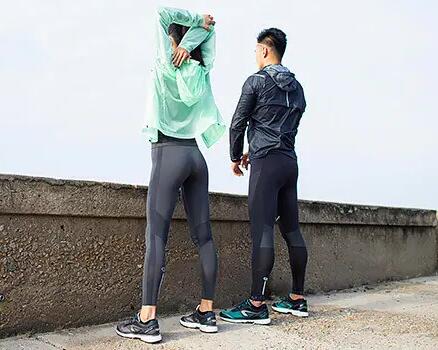What is the right way to breathe ?
The right way to breathe is through "abdominal" breathing: the abdomen fills first as you breathe in, followed by the lower thorax and finally the upper thorax. You breathe out by pulling in the abdomen. This way of breathing will displace a greater volume of air with each breath, making it more efficient and reducing tension in the upper body.
As for breathing rhythm, you should take a longer time to breathe out than breathe in. This method is more effective at emptying the lungs, thereby renewing the air more effectively when you next breathe in. For example, breathe in over the space of 2 strides and breathe out over the space of 3 to 5 strides depending on your pace and how you feel.








